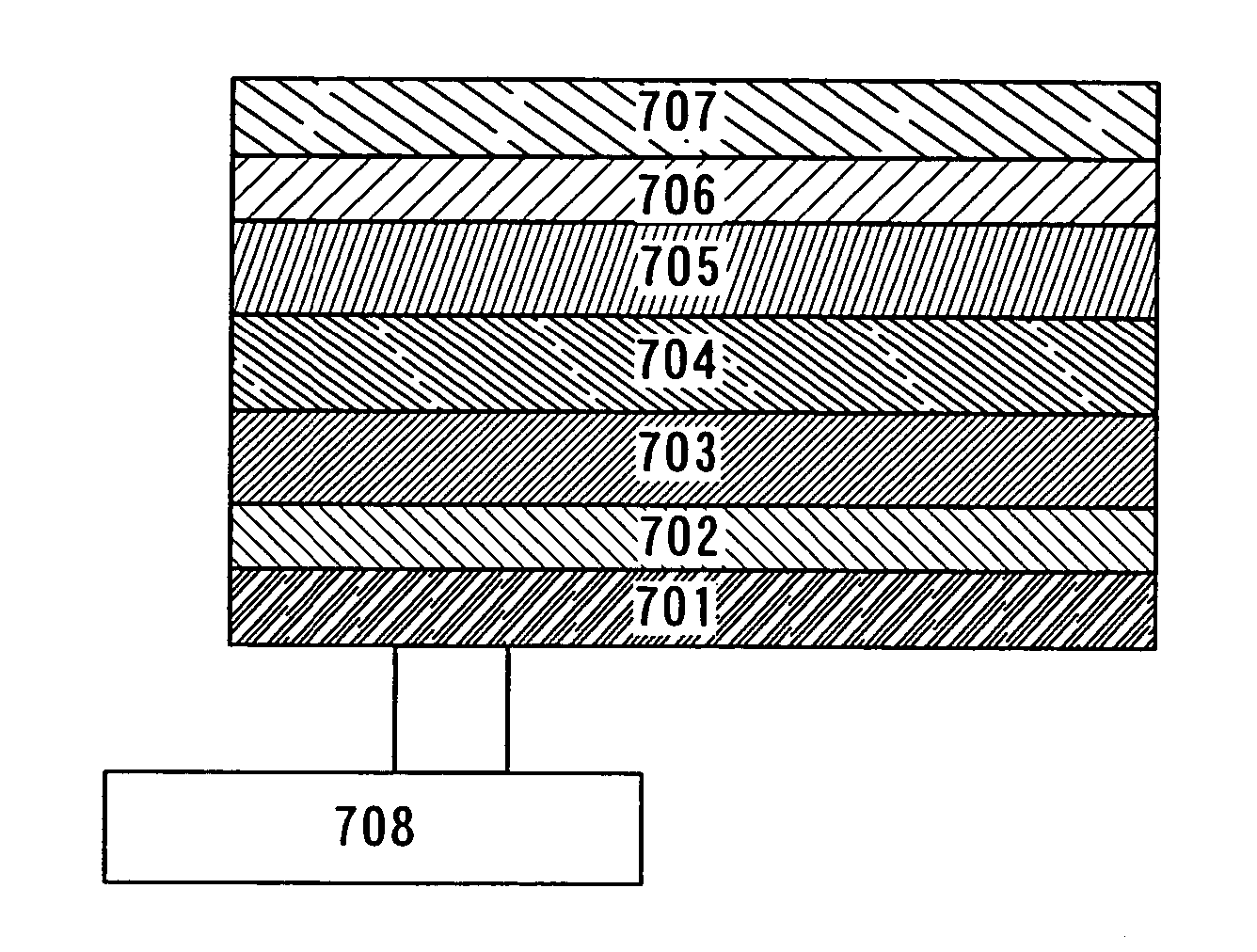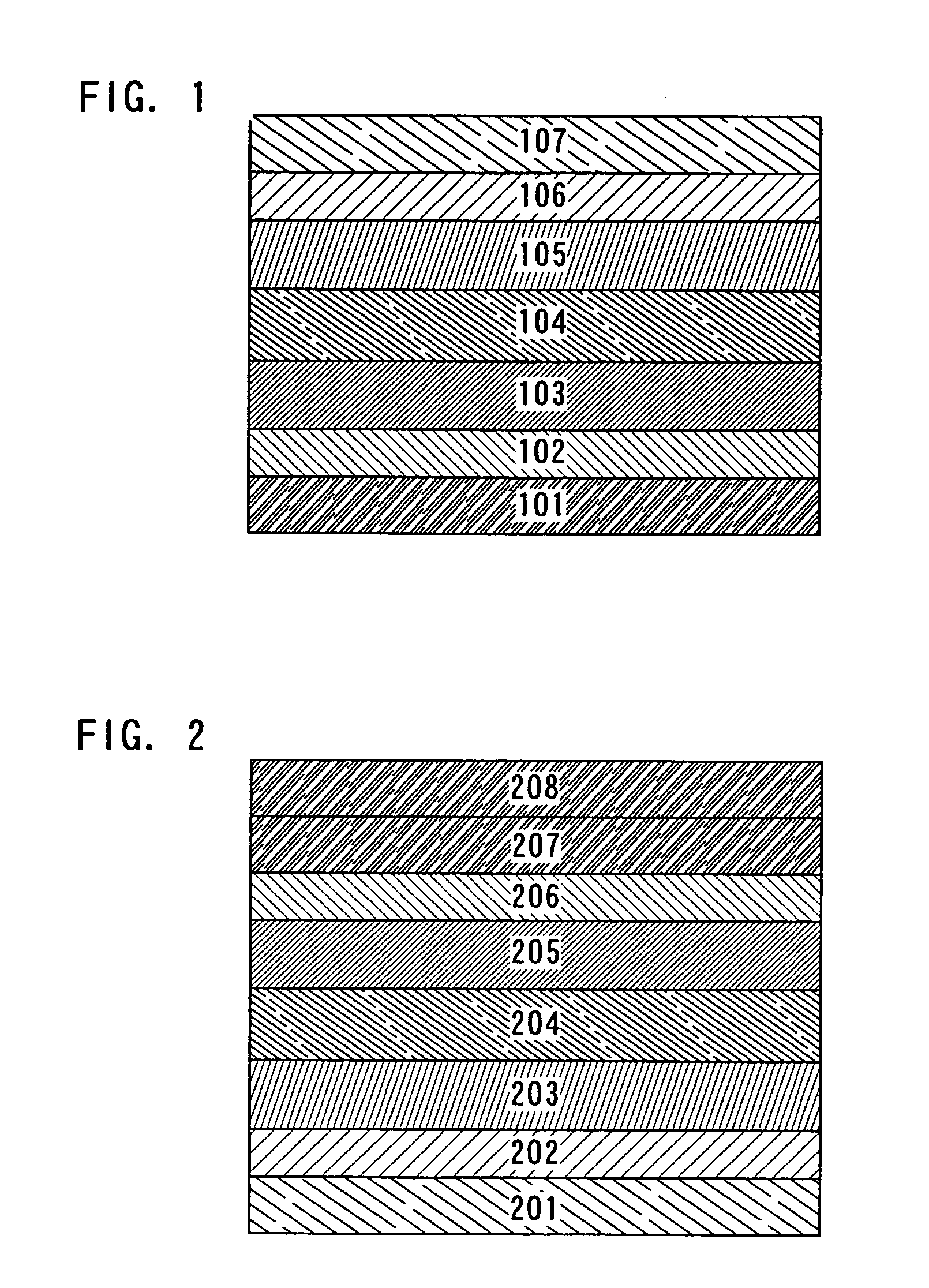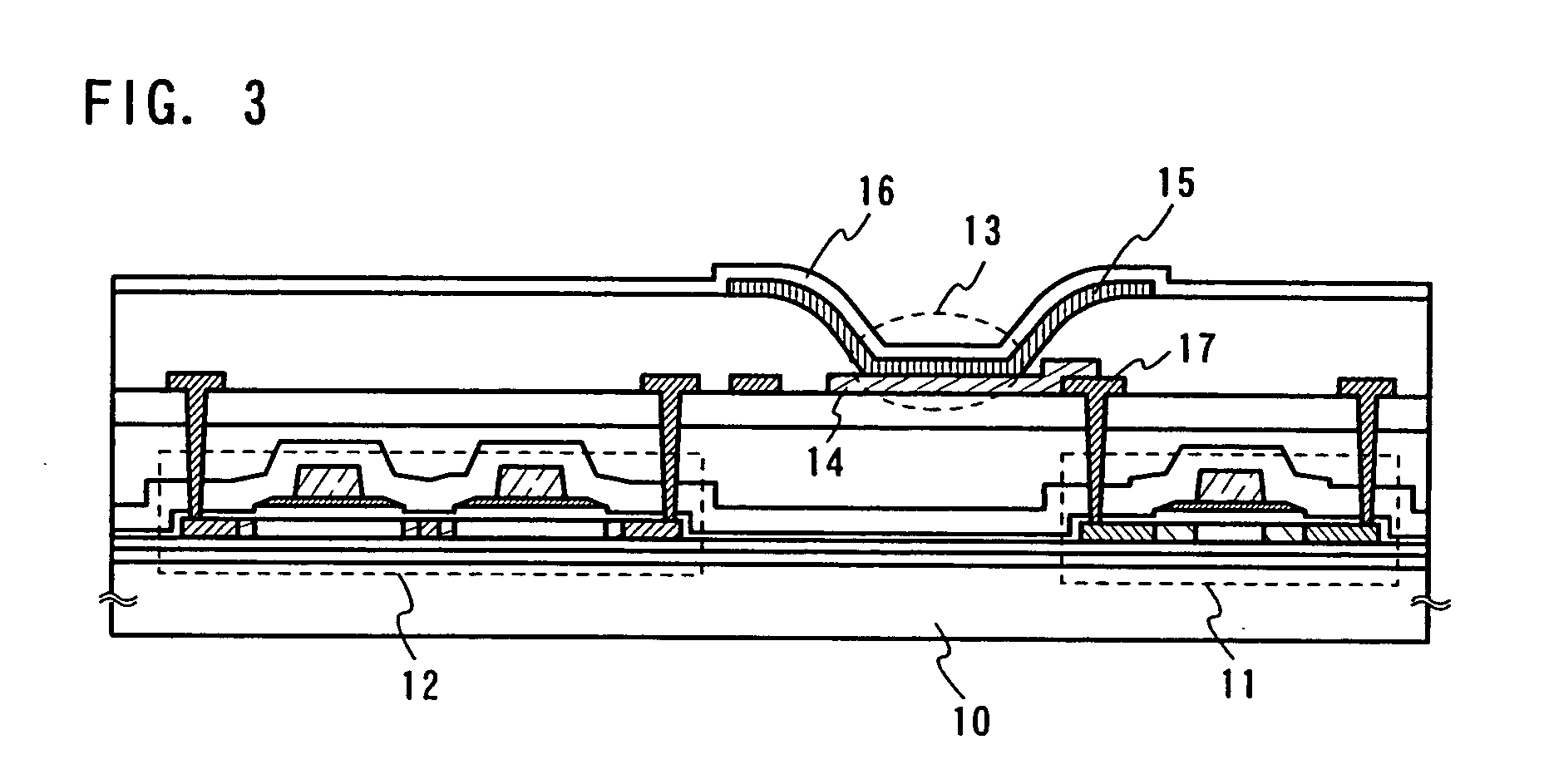Light-emitting element and light-emitting device using the same
a technology of light-emitting devices and light-emitting elements, which is applied in the direction of discharge tube luminescence screens, discharge tube/lamp details, electric discharge lamps, etc., can solve the problems of poor bondability between metal electrodes, short emission lifetime, and poor organic compound layer bondability, and achieve efficient emission and stable luminescence.
- Summary
- Abstract
- Description
- Claims
- Application Information
AI Technical Summary
Benefits of technology
Problems solved by technology
Method used
Image
Examples
embodiment mode 1
[0036] An element structure of a light-emitting element of the present invention is explained with reference to FIG. 1.
[0037] The light-emitting element of the invention has a structure in which a plurality of layers is sandwiched between a pair of electrodes. The plurality of layers is formed by laminating a layer comprising a substance with high carrier transportability, a substance with high carrier injectability, or the like and a layer containing a substance selected from bismuth oxide, cobalt oxide, chromium oxide, copper oxide, nickel oxide, and titanium oxide in combination so that a light-emitting region is formed in the part separated from each electrode.
[0038] Specifically, the light-emitting element of the invention has a structure in which a first layer 102 containing a substance selected from bismuth oxide, cobalt oxide, chromium oxide, copper oxide, nickel oxide, and titanium oxide is provided to be in contact with a first electrode 101; a second layer 103 comprisin...
embodiment mode 2
[0048] In this embodiment mode, a light-emitting element having a different laminated structure from that shown in Embodiment Mode 1 is explained with reference to FIG. 2.
[0049] A light-emitting element of this embodiment mode has a structure in which a first layer 202 containing a substance selected from bismuth oxide, cobalt oxide, chromium oxide, copper oxide, nickel oxide, and titanium oxide is provided to be in contact with a first electrode 201; a second layer 203 comprising a substance with high electron transportability is provided to be in contact with the first layer 202; a third layer 204 containing a light-emitting substance is provided to be in contact with the second layer 203; a fourth layer 205 comprising a substance with high hole transportability is provided to be in contact with the third layer 204; a fifth layer 206 containing a substance selected from bismuth oxide, cobalt oxide, chromium oxide, copper oxide, nickel oxide, and titanium oxide is provided to be i...
embodiment mode 3
[0053] There is no specific restriction on an element structure of a light-emitting element of the present invention, and it can be appropriately selected depending on the object. Basically, it is a structure in which layers containing light-emitting substances (formed by appropriately combining: a hole injection layer, a hole transport layer, a first mixed layer of a hole transport material and a light-emitting material, a light-emitting layer, a second mixed layer of a light-emitting material and an electron transport material, a hole blocking layer, an electron transport layer, an electron injection layer, and the like) are sandwiched between a pair of electrodes (an anode and a cathode). In the invention, a slash sign will be defined as hereinafter. A laminating order as described A / B / C means A is formed at first, subsequently B is formed over A, and then C is laminated over B. For example, a light-emitting element having the following structure is given: anode / hole injection la...
PUM
 Login to View More
Login to View More Abstract
Description
Claims
Application Information
 Login to View More
Login to View More - R&D
- Intellectual Property
- Life Sciences
- Materials
- Tech Scout
- Unparalleled Data Quality
- Higher Quality Content
- 60% Fewer Hallucinations
Browse by: Latest US Patents, China's latest patents, Technical Efficacy Thesaurus, Application Domain, Technology Topic, Popular Technical Reports.
© 2025 PatSnap. All rights reserved.Legal|Privacy policy|Modern Slavery Act Transparency Statement|Sitemap|About US| Contact US: help@patsnap.com



